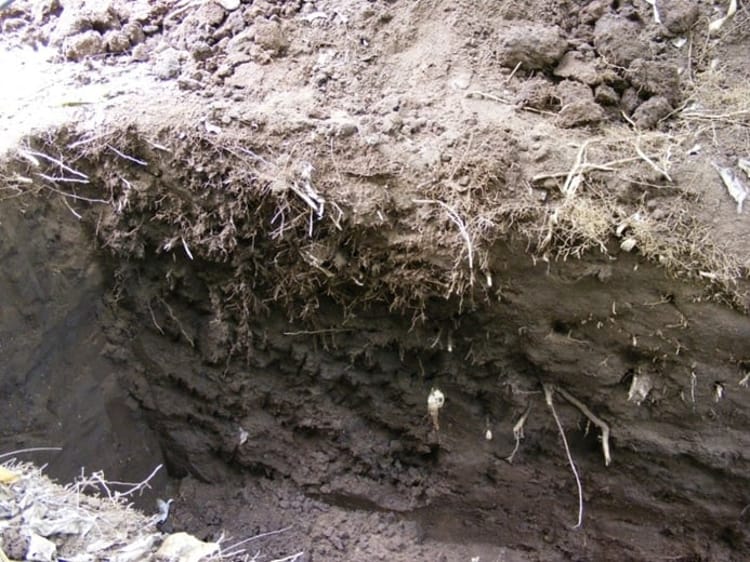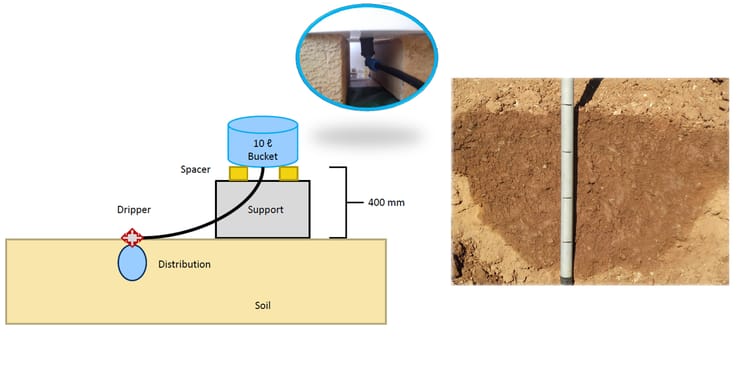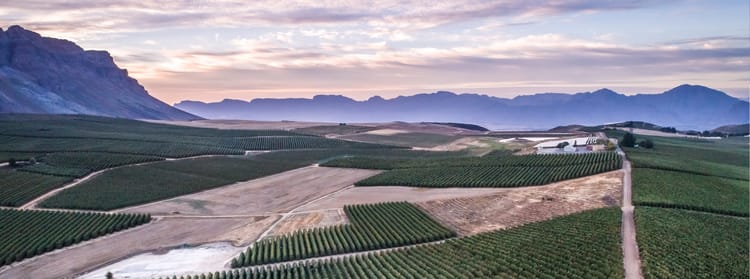The building blocks of irrigation scheduling
An excellent irrigation system is nothing without accurate irrigation scheduling.
It is essential to know when to irrigate, how much water to apply and when not to irrigate, according to Robbie Childs, irrigation agronomy expert. “If we do not have this information, we are at risk of over irrigating, wasting water and fertiliser and placing the plant under pressure. There is also a risk that we under irrigate and limit the plant’s production potential.”
Childs shares the following important equation that sums up the goal of irrigation scheduling:
Transpirationc / Potential transpirationc = 1
This means that a plant must use its full transpiration potential. If the plant is under pressure, the answer of the equation will be smaller than 1, as actual transpiration will be lower than the plant’s potential transpiration.
Tools and process
To collect the necessary information, we must follow a process that includes several important measurements, tests and calculations. “The goal is to develop a user-friendly scheduling plan that ensures sustainable production and uniform results.” This requires certain tools: profile pits, soil water monitoring equipment, a scheduling programme, weather stations, and most importantly, knowledge. “Do not take shortcuts and omit any tools or steps. If we do not perfectly fit in every piece of the puzzle, optimal irrigation will not be possible, and production will suffer.”
Profile pits
We must never underestimate the value of profile pits. When we dig a profile pit, we must pay attention to soil type and texture, signs of excessively wet soil, the depth and width of the active root zone and soil layers that may impede root development and water distribution. “Our goal is to answer a few questions: What amounts of clay, sand and silt are contained in the soil? Do we need to install a drainage system? What is the size of the root zone? Can we mechanically improve the impeding soil layers?”
This explains the initial purpose of a profile pit during the planning and preparation phase. After irrigation has commenced, the profile pit becomes a tool to recalibrate soil water monitoring equipment and to manually monitor soil water levels. “We ‘monitor’ the soil water levels by taking a sample with your hand, assessing it and ranking it. This measurement is used to calibrate monitoring equipment and to assist in interpreting data.”
It is very important to irrigation scheduling that we distinguish between the active root zone and the deeper, less active roots, or the buffer zone. “This is to prevent the over irrigation of the buffer zone as water uptake is slower in this zone. If we make this distinction, we can schedule shorter maintenance irrigation periods and longer corrective irrigation periods only when the buffer zone requires it.

In this image we can clearly see the active root zone. If we regularly wet the soil outside of this zone, we will waste water, fertilizer and energy.
Soil water distribution
One of the tests we must do during the preparation and planning phase, is the basic soil water distribution test that determines the width to depth wetting ratio of the soil. “From other data we can determine how deep we must irrigate and with this test we can also determine how wide the water will spread. With this knowledge we know what the soil’s water holding capacity is. We now know the size of the soil reservoir in millimetres or litres.”
Soil water monitoring
Various devices exist to measure soil water levels. Childs explains that these devices are mainly distinguished by the way they take measurements – taking single measurements compared to multiple continuous measurements. “Although both types of devices get the job done, I always favour continuous measurement as the data it produces fills the gaps in the available data. This enables us to take our scheduling regime to a next level by attending to the finest details.”
Measuring is essential to efficient irrigation. “We all have the theoretical knowledge, but several factors complicate the matter. This is factors such as rainfall, how much rainwater actually reached the root zone, plant stress factors that may impede water uptake, what depth the irrigation water reached, and more. All of these factors influence the evapotranspiration of the plant and must be measured and considered in all calculations.”
As mentioned, measurement makes it possible to continuously adjust your scheduling regime and attend to its finest details. A variety of factors cause plant stress, all of which must be brought into consideration. “This includes the salt content of the water, root problems caused by Phytophthora and nematodes, saturated or dry soil, soil compaction and imbalances in soil elements.”

For the simple soil water distribution test, we use a five to ten litre bucket on a platform raised 40cm from the soil surface. Connect a dripper with a similar flow rate to the type that will be used in the irrigation system, to a thin pipe. Connect the other end of this pipe to the bottom of the bucket and place the dripper end on the soil. Let the bucket run empty. You can now open a profile pit and look at the water distribution pattern.
Scheduling programme
It is becoming clear that tailor- made scheduling irrigation is based on data from a variety of sources. However, this data has no meaning if it is not processed. “We can do irrigation scheduling without a scheduling programme, as long as we do the necessary math. Without these calculations, irrigation scheduling will still just be a guessing game.” We have to calculate how much water the soil reservoir can hold, how much water is applied over the total area per hour, the actual water requirements of the plant per day, and more. “It is simply easier to do all of this with a good scheduling programme.”
Various different programmes are available, and the choice of programme will depend the specific requirements of a system and personal preference. It is however essential that the programme allows you to input crop type, type of irrigation system, soil data and weather data.
The programme will propose an irrigation guideline, which will still have to be fine-tuned. “To fine-tune the guidelines to your circumstances by considering the accuracy of evapotranspiration (ETo) data, the crop coefficient (Kc), the water holding capacity of the soil, the potential of the crop planted and plant age.
A long list of factors influences scheduling calculations:
- Plant spacing
- Row spacing
- Continuously updated evapotranspiration (ETo) value
- Soil moisture levels
- Crop type (Will determine the crop coefficient)
- Dripper/Sprinkler spacing
- Flow rate/Delivery rate of drippers/sprinklers
- Rainfall (Calculation of water penetration to the active root zone)
- Soil type
- Age of plants
- Size of the active root zone
Weather stations
Weather stations and weather data are important resources for irrigation scheduling.
“The farmer can buy a weather station or subscribe to a reliable weather data program. As long as you have access to real-time evapotranspiration (ETo) data. The ETo value combines all weather data elements that impact the plant’s ability to take up water.”
Reactive scheduling
Childs explains that a scheduling guideline must be adjusted continuously in reaction to changing circumstances and new data. “Let’s say we decide, based on the available knowledge, to irrigate three hours per day six days a week. At the end of the first week, we check data from monitoring equipment, and we get profile pit data. We also get the latest weather data. If the data, for example, shows that he soil is too wet – we must adapt by reducing the active irrigating hours. We can decide to increase the active irrigating hours if data shows that the soil is dry.”
There are two approaches to irrigation scheduling, either fixed hours or quantities in a varying cycle, or a fixed cycle with varying hours. “Your approach will be determined by the irrigation method in use. For a localised irrigation system, such as drip irrigation, a fixed cycle with carrying hours is the best approach. An irrigation method that wets a larger area, will require a varying cycle.”
It all comes down to one truth – we cannot depend on guessing and estimates in irrigation scheduling. Only if we collect the necessary data and do the necessary calculations, will we have success.


Share your thoughts
Comments
We'd love to hear your thoughts! To enter a comment, type your name and email address.